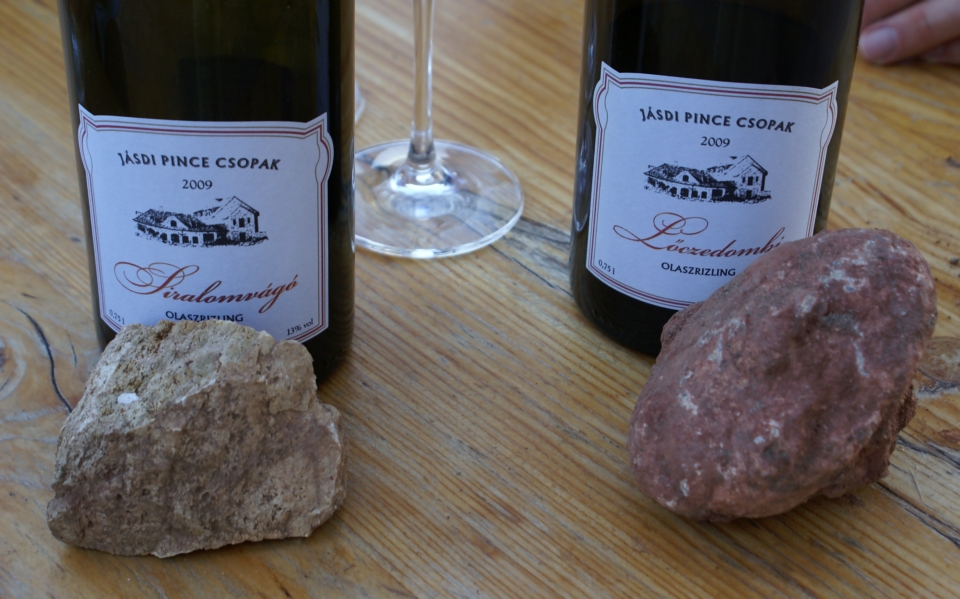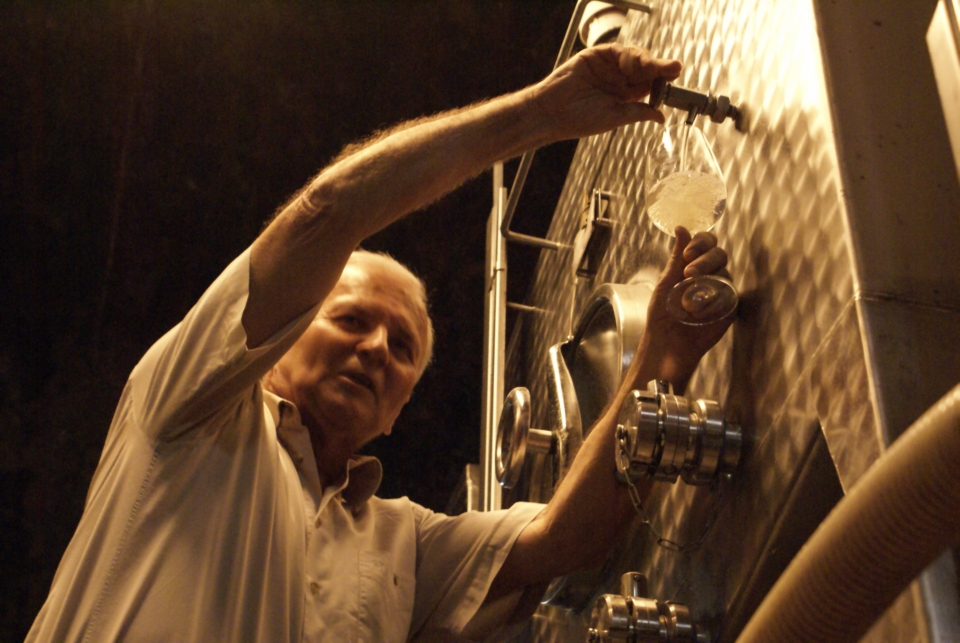István Jásdi or the power of self
Posted on 12 May 2012
Wine competitions are OK (when properly organised) but winery visits are the thing to do. Wine invariably tastes better and more complex when tasted in situ. There’s nothing better to deeply understand a wine, or a wine region, than to visit a winery.
Our happy bunch of jurors went to visit the current president of Hungarian vintners, István Jásdi, a former CEO who acquired this 18-hectare estate on the Balaton lake in 2002.
I’ve followed these wines from the beginning and they immediately set a new standard for Balaton wines. Typically these are light holiday wines with little substance. Jásdi showed that they can be structured, potent, mineral, ageworthy white wines. And the Olaszrizling grape really owes a lot to Jásdi who again showed that rather than being a rustic overcropped junkie, it could rival German Riesling as a terroir-expressive mineral wine.
One part of Jásdi’s work has been selecting the best parcels on the Balaton to make cru wines. The geology here is very varied, and the adjacent Lőczedombi and Siralomvágó vineyards have very opposite soil types: pink water-retaining sandstone and well-drained limestone rocks, respectively. Olaszrizling from the former is finer, leaner, more mineral-driven while the latter gives a more fiery, textured wine.
Jásdi produces a wide range with some nice basic village wines including a successful, crisp rosé, while in the cru range he has a potent Szürkebarát, Chardonnay, red as well as white blend named Ranolder. The latter’s white version mixes Olaszrizling with Furmint, a surprising grape to grow here but actually very interesting in its voluminous, spicy expression.
The other fascinating dimension here is ageworthiness. István Jásdi opened the first vintage of Ranolder for us, 2002, which is a beautiful wine with lots of complexity and taking on an earthy, mushroomy dimension not unlike an aged traditional Chablis. The 2004 Berekháti Olaszrizling was still showing much oak (perhaps too much, as many of the early wines here) and has further ageing potential. On a terroir that many used but nobody really fully exploited, István Jásdi is showing that in Hungary as anywhere else, so much is still up to the dedicated, intelligent individual.
Disclosure
I am paid to work as a juror at the Pannon Wine Challenge and my flights, accommodation and evening programme are paid for by the organisers.





